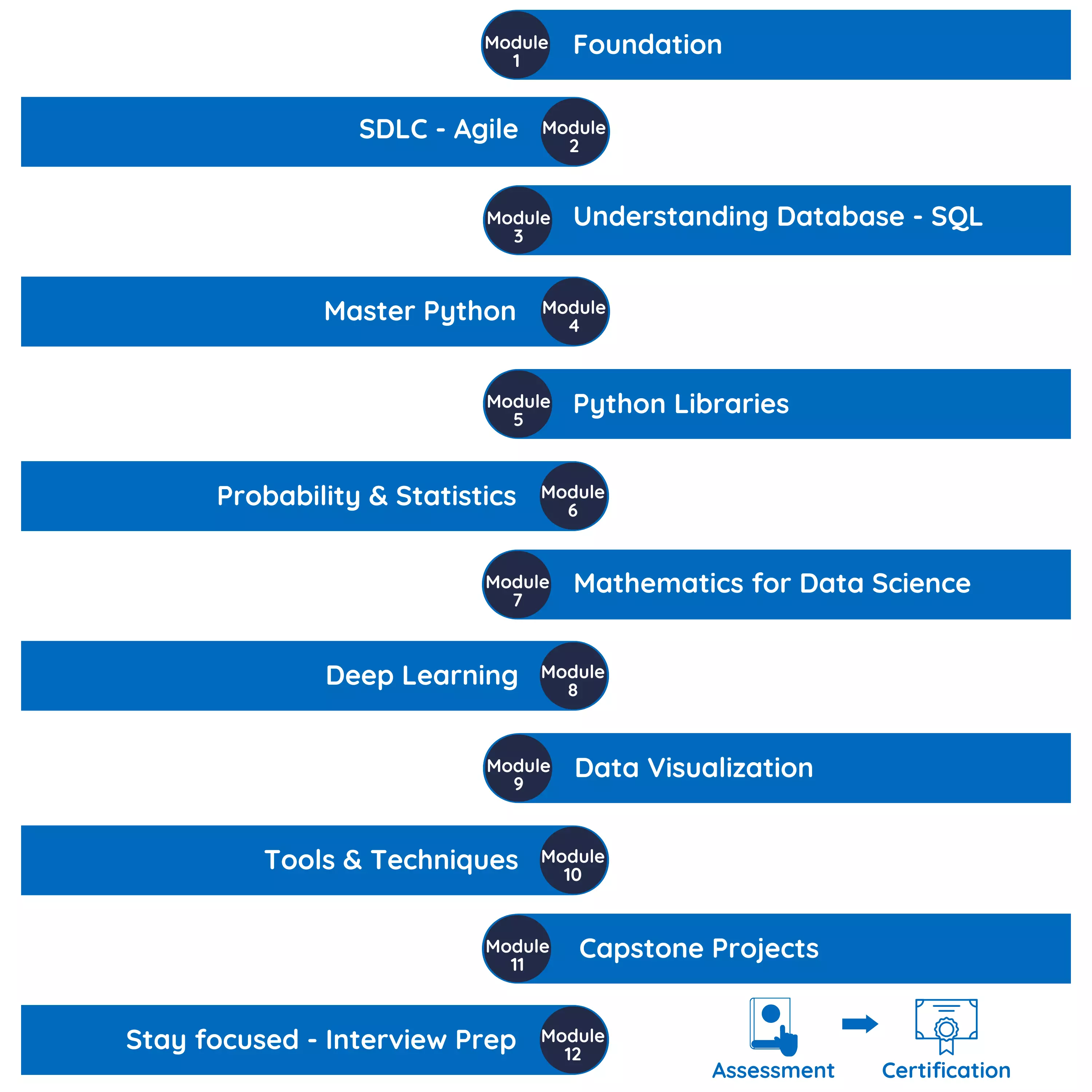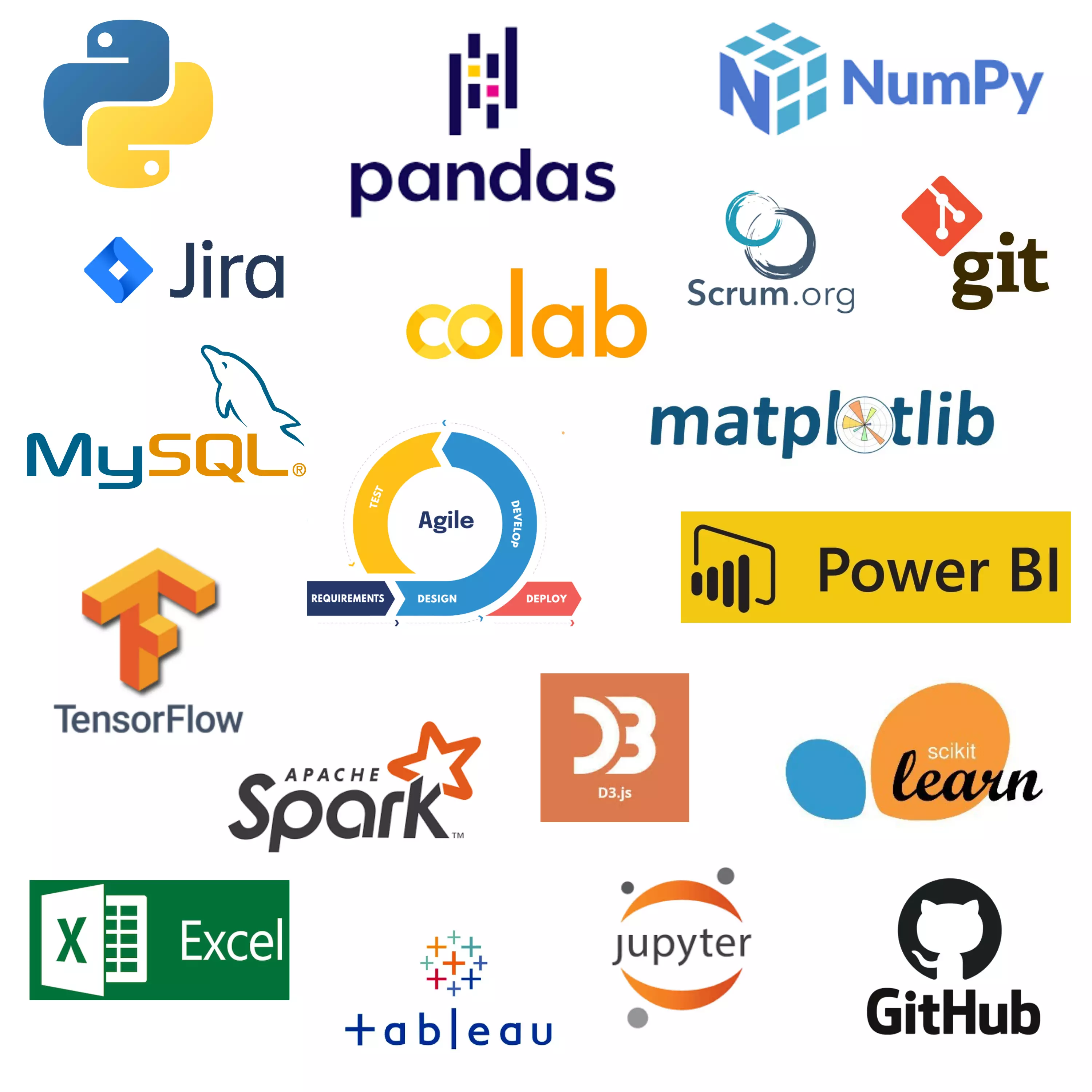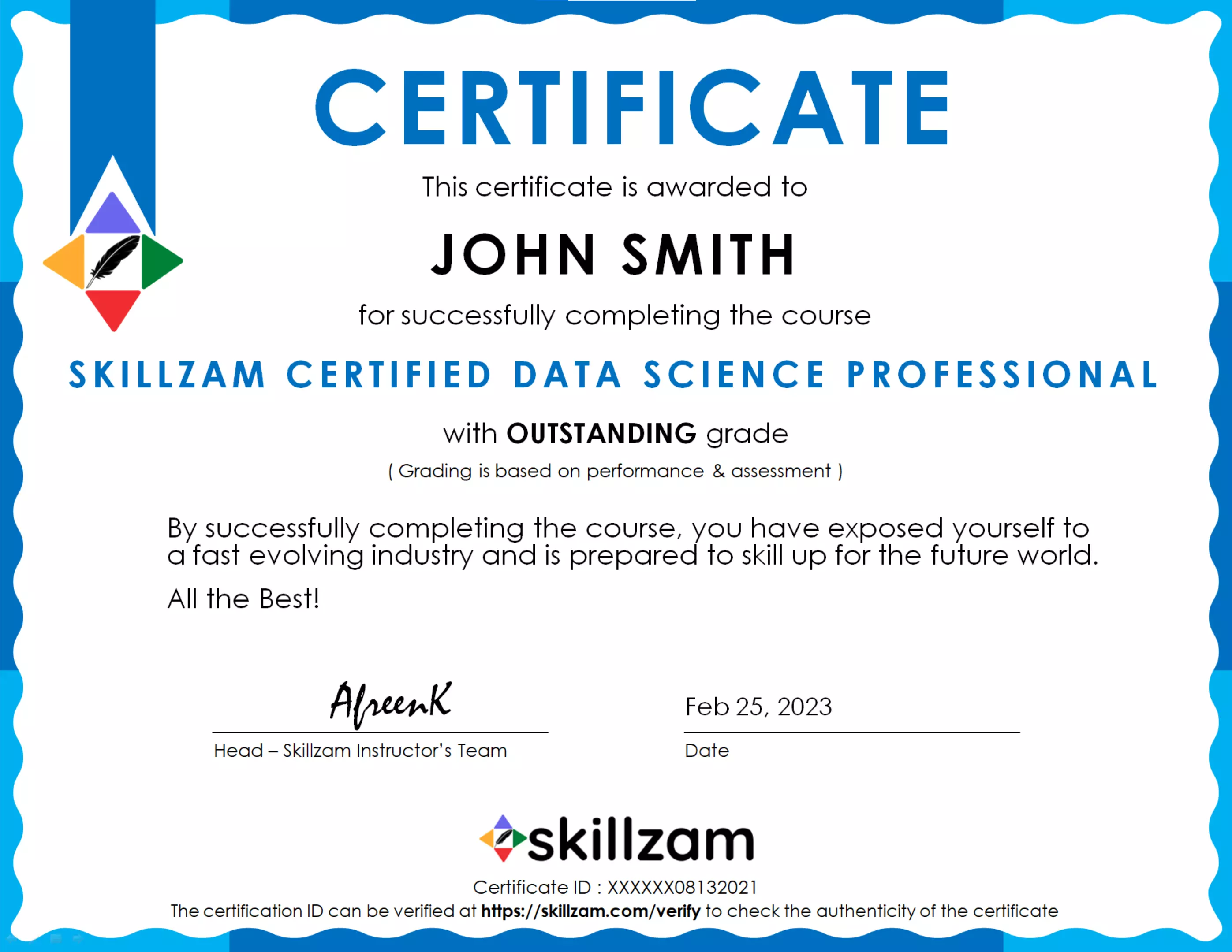Time for Both
Theory & Practical
Unlimited Placements
Get jobs through Workzam
Affordable Fees
Excellent ROI
Skillzam Certified Data Science Professional (SCDP)
...
Learn Data Science in this full tutorial course for absolute beginners. Data science is considered the "sexiest job of the 21st century". The course provides accessible and non-technical overviews of the field of data science and its facets, such as common programming languages and applications, the practical aspects of data sourcing, important mathematical concepts, and common statistical approaches.
Data science sits at the intersection of statistics, computer programming, and domain expertise. The course provides the entire toolbox you need to become a data scientist. Data science skills like Statistical analysis, Python programming with NumPy, pandas, matplotlib, and Seaborn, advanced statistical analysis, PowerBI/Tableau, Machine Learning with stats models and scikit-learn & Deep learning with TensorFlow.
Understand the mathematics behind Machine Learning, improve Machine Learning algorithms & to apply everything you have learned to more and more real-life situations.
SCDP - Learning Path
...
Technology Tools, Languages & Frameworks
...
Course Content
...Computer & Web Fundamentals
SDLC, Agile & Jira
SQL
Python
Data Science Introduction
Probability
Statistics
Advanced Statistical Methods in Python
Mathematics
Deep Learning
Fresher's Final lap
Get certified based on performance and assessment
...
FAQs
Frequently Asked Questions
...
What are the Tecnhology paths available?
Can students enroll for more than one Technology Path?
Yes, candidate can select more than one Technology Path specialization.
How much does it cost for Skillzam Programs like LEAP or SCEP?
The applicable fees are very much affordable. Please call 80500 80399 to get the latest fee details and also referral discounts.
For whom does SCEP Program better applicable?
For students in their 1st, 2nd or 3rd year college, can get ready for high paying jobs with SCEP (Skillzam Campus Enable Program). Study 3 hours/week alongside your academics. (Any Degree or Branch).
For whom does LEAP Program better applicable?
For Freshers, i.e. Final year students or Graduate / Post Graduate candidates (Any Degree or Branch), who looking for a Technology Jobs can enroll in LEAP (Learning Excellence through Advanced Program). Intensive program with a proven curriculum & become a software Professional.
Are LEAP & SCEP Programs available online or offline?
Both Skillzam Programs are available in online/offline mode. Offline sessions will be held at Belagavi regional headquarter.
LEARNING CENTER :
1st Floor, Pearl Plaza,
Plot# 271, Shivbasava Nagar,
Nehru Nagar, Belagavi,
Karnataka 590016
What about the placements?
Skillzam works in partnership with Workzam to offer unlimited placement opportunities for our students.
We have a dedicated team of HR professionals, who will help our students get their first dream job.
Over the years, we have developed a very healthy relationship with our more than 500+ corporate clients, who would be more than willing to hire our students.
Is there any installment option for fees payment?
Yes, we do have an installment options available.
What does interview preparation module contains?
Interview Prep Module contains Non-technical topics like Quantitative Aptitude, Reasoning, Verbal ability, Reading comprehension, resume building, mock interviews and more.
Skillzam : Apply Now!
...Step 1
Step 2
of
How would you rate this course overall?
- Skillzam Team
Write a public review